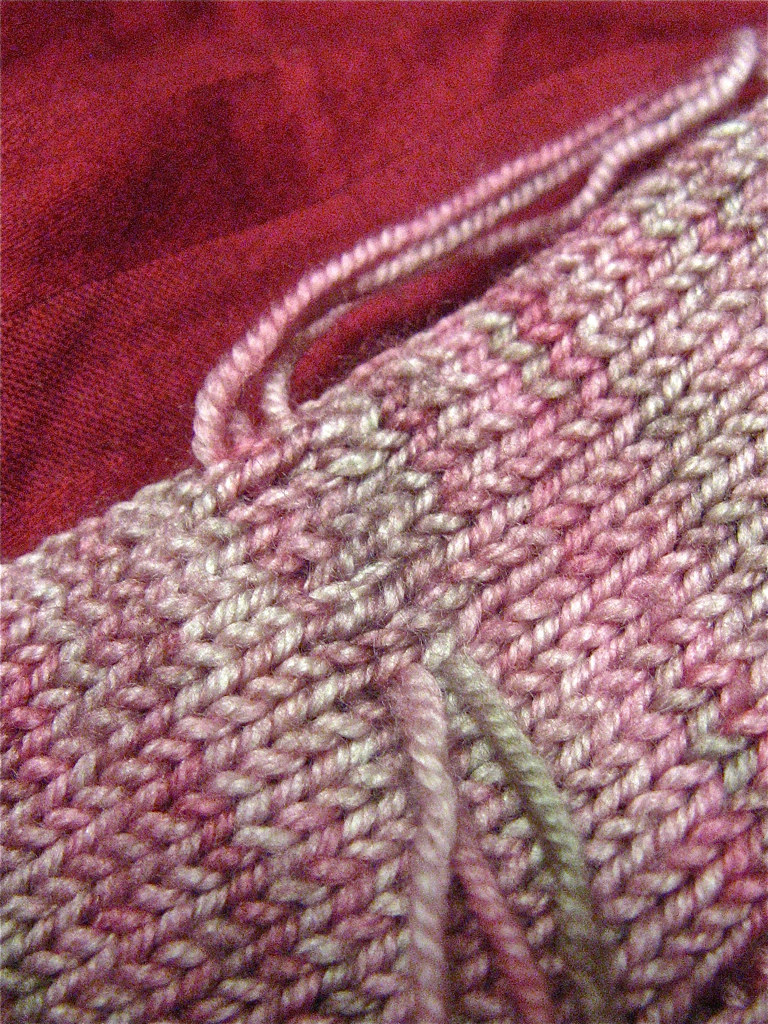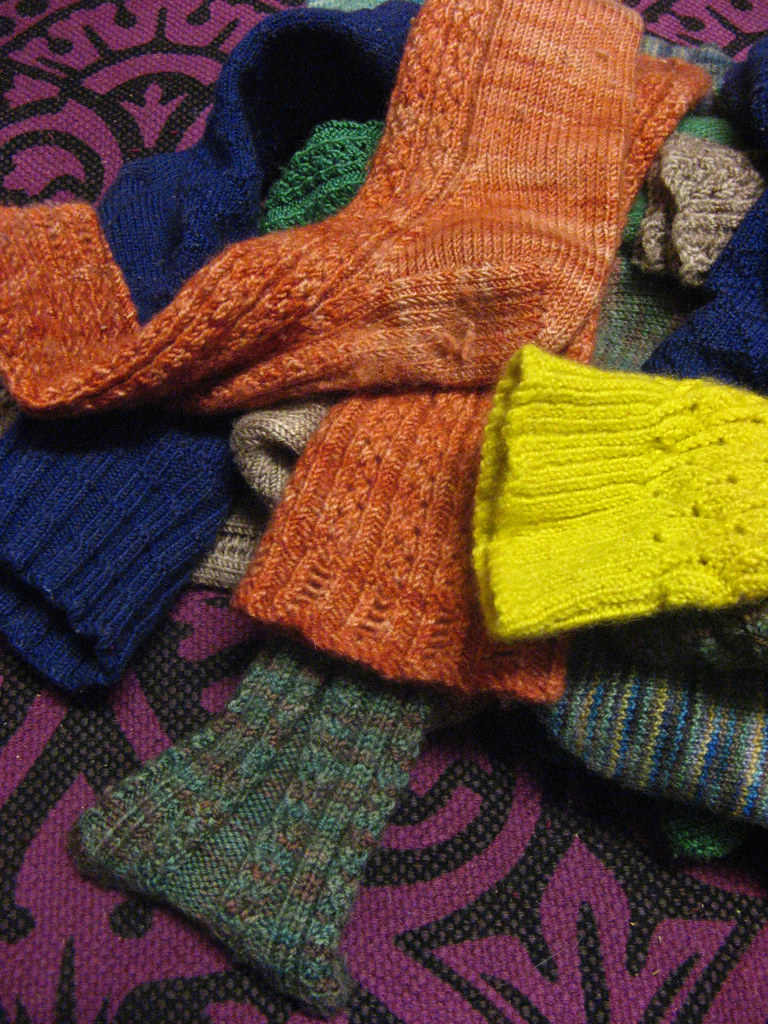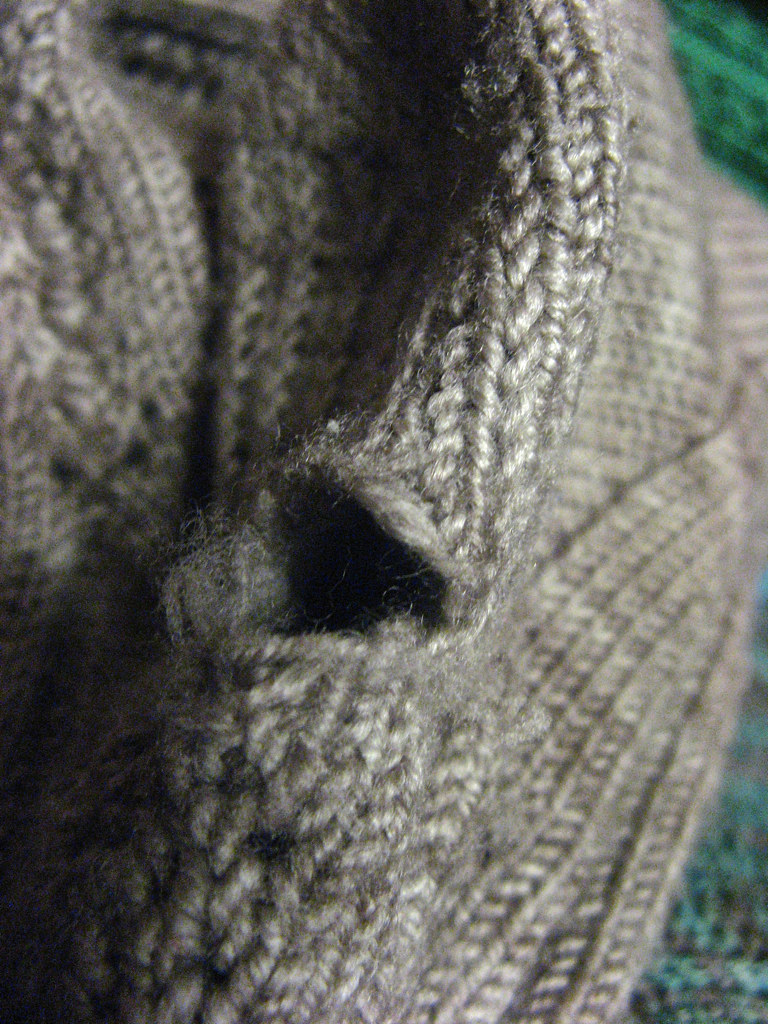A pair of Hedera socks I had on display at my LYS out of Ella Rae Lace recently developed a hole in the foot. My friend took them home to repair them, but found online darning tutorials a bit wanting - most recommend building what's essentially a woven structure on top of a knitted one. Since the socks are in good condition otherwise, I decided to repair them so that the knit's appearance stays the same. These particular socks had never been worn, so the yarn is still very smooth and pill-free.
The biggest problem? The hole wasn't just a row - it was three full rows of stitches, two stitches in each row, that had been damaged. Which means I couldn't just take the bottom two stitches and fasten them to the top; I had to rebuild the knit structure. Although I've been able to repair two-row damage before with only one length of yarn, three is a little much, so instead, I cut three lengths of yarn and rebuilt each row individually. Although when cut vertically, knit fabric tends not to unravel too quickly, the first stitches on the vertical edges of the hole were really unstable, so I started 2-3 stitches out from each.
Instead of creating a stabilizing weave, as with most darning, I created new knit stitches by sewing, following the line of the original yarn. At any given time, there were 2-3 live stitches in midair, but I kept them pretty loose so they wouldn't pull out. As I repaired the next stitches and stabilized the base row, I tightened them up to the appropriate gauge.
Above is the resulting fabric, which is a little wonky, but I think it will settle in after a washing. The ends still need to be woven in, and it may be slightly bulkier than before, but I'm always really pleased with the end repair done in this method. I've done it on socks, vintage sweaters, and cast-off contemporary sweaters (a Catherine Malandrino alpaca lace top in particular). The original yarn is always good to use for handknits, but a single ply of a similarly colored sock yarn with a close-ish fiber content can also work on finely knit commercial sweaters.
The defeats?
While in Japan, I wore a really unfortunate pair of loafers that chewed up the back of five pairs of my handknit socks. It was also really hot at the time, so the chewing not only ruined the backs, it also felted the stitches beyond recognition. This might be a job for old-fashioned darning, but I think I may have lost the game on most of these, as many the feet and legs have also become pretty hopelessly felted. Worst $50 I've ever spent on a pair of shoes, and I left the damn sock-killers in a free box in Hirakata.
Ah well - I guess I'd better start knitting some new socks, then.





No comments:
Post a Comment